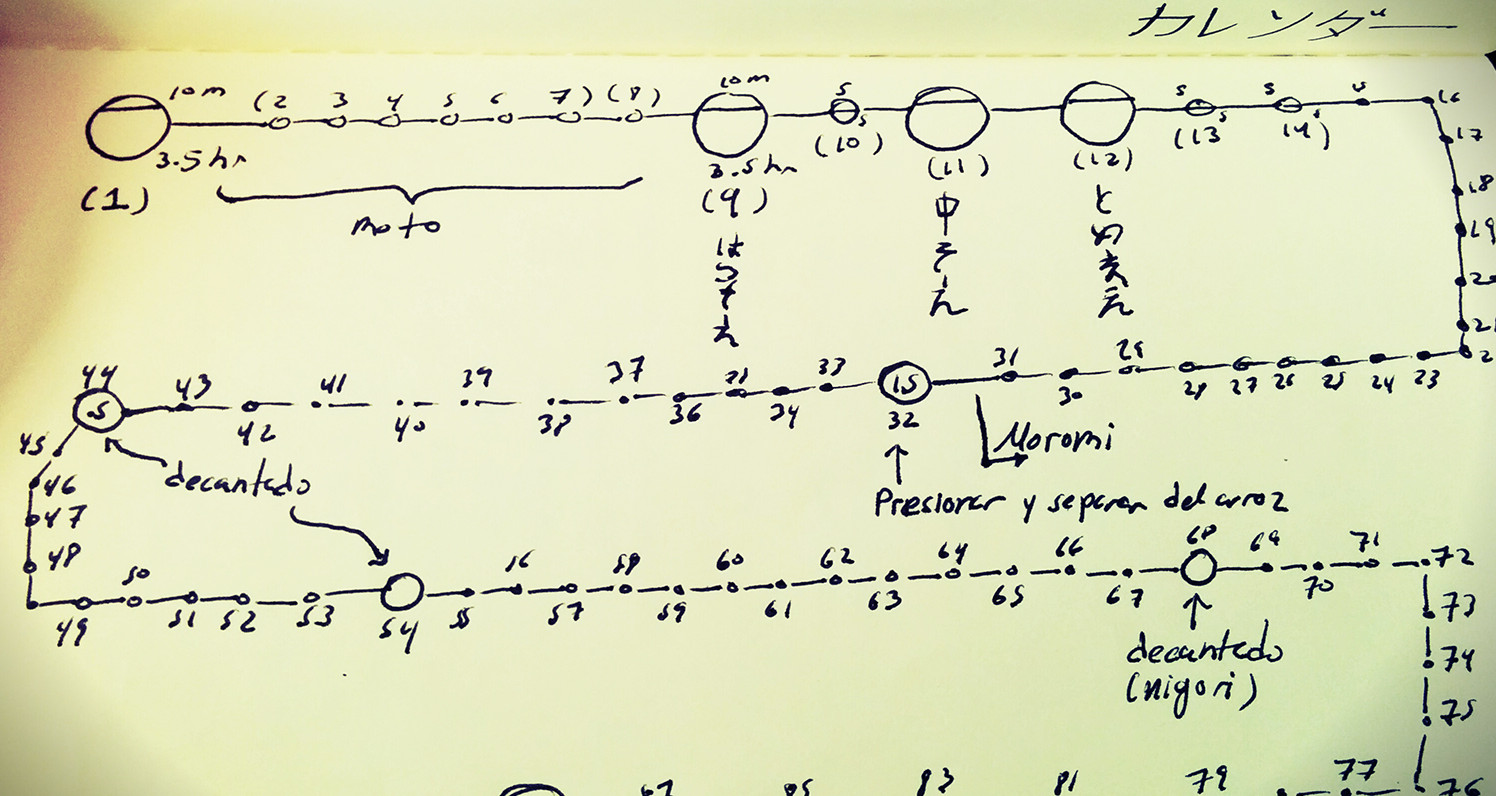A First Sake Calendar

Here is my first attempt of a comprehensive calendar for the process of making sake, right out of my personal log. I’ve used this for all of my batches so far (3)

However, after reading The Visual Display of Quantitative Information by Edward Tufte, I’m definitely going to make an effort to simplifty it.
In the meantime, however, you can see the main phases of the process, and a more-or-less high level view of the activities involved.
The process
As all days are numbered, you can immediately see that the whole thing takes approximately 88 of them. The size of the circle on each day denotes the complexity of the activities involved. Some days are separated into morning (upper section) and evening (lower section) parts. There is something to do each day until your precious sake is bottled.
Days 1 through 8 are devoted to the cultivation of our yeast and the first population of koji, forming a very aromatic (some would say) mixture called moto. The three big circles that follow (until day 12) are incremental rice additions, where we:
- Add some extra Koji to our moromi.
- Steam and add some extra rice.
- Add some more water. Don’t want our yeast/Koji to get too thirsty.
Each addition has its own name (as you can see) and although the traditional method only calls for three of them, some people actually use four (and I will, too, on my next batch. Stay tunned for the results). Up until this point, and until day 31st, our big mash of rice, water, koji, and yeast is called moromi. It smells so good that some days I just want to dip my face on it (it turns out that I’m not the only one, in Japan people sell their sake at this point of the process, under the name of doburoku).
Day 32 is where we press the moromi and end up with something that looks pretty much like milk. The sake lees we separate and used for other things in the kitchen, such as marinade for salmon or steak, and the sake is left to decant and rest until we bottle it.
As the sake is resting, solids will sediment and thus a couple of rackings (happening on days 44, 54, and 68) will get rid of it, clarifying our delicious beverage. Unless you want nigori, and if you are that kind of person, then you don’t decant your sake that much and voilá.
And finally, after all this dance, day 88 is an excuse to drink the whole afternoon as we pasteurize and bottle our sake. Here we perform a process called amelioration, where final and mysterious adjustments to the flavour of our creation are performed.
Such a magical process will be described in another post.